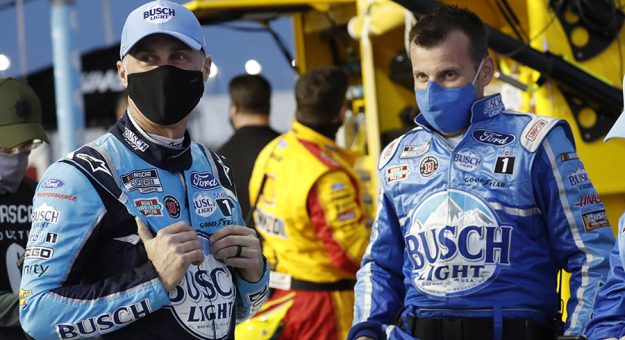The 2003 Daytona 500 was the first race that Rodney Childers worked for a NASCAR Cup Series team. It was also the first Cup Series race he ever attended.
“I had always raced myself on the weekends and never had time to go watch Cup races,” Childers recently told SPEED SPORT. “I’d sit on the couch and watch them, but never actually traveled to any.”
At the time, Childers was best known as a prodigious short-track racer, winning races throughout the Southeast during the late 1990s and early 2000s. It didn’t take him long to find success on the crew side of the sport though.
Within two and a half years of that Daytona race he got his first chance to serve as a crew chief in the Cup Series, and today is regarded as one of the stars in his field. His pairing with Kevin Harvick on the No. 4 Ford Mustang for Stewart-Haas Racing is one of those once-in-a-generation tandems; through the third week of March the duo had shared 35 victories and the 2014 Cup Series championship.
Childers is a combination of old-school racer and modern-day crew chief who utilizes plenty of racing instincts, but also swears by simulation data and other engineering tools at his disposal.
“I try to keep it as realistic as I can and still have that racer mentality, still focused on the race cars and the details of those,” he said. “I don’t think that will ever change in any type of racing. Those details have to be right and then you also have to be open to the engineering side.
“There’s no way that you can set these things up accurately and go to the race track, especially with no practice, and unload and be fast unless you use those tools correctly and believe in them.”
Although Childers grew up in the racing hotbed of Mooresville, N.C., he wasn’t embedded in the sport from an early age. He had an uncle who raced on dirt tracks and another that drag raced, but motorsports was not on his immediate family’s radar. Still, he enjoyed anything with wheels and after attending a couple of dirt kart races, finally got a go-kart for Christmas and was on his way.
By the late 1990s, Childers was making a name for himself in late model stocks and various touring series with his sights set on climbing the ranks into the Xfinity Series. But while his talent was there, the sponsorship dollars were not.
“I could get in the car and drive, I could work on them, I could set them up myself, but I wasn’t the type that was just going to go somewhere and get sponsorship and bring it back to a team,” he said.
Eventually, a friend got him an interview at Jasper Motorsports and he was hired that day. He made his debut working on the road for crew chief Bootie Barker and driver Dave Blaney at the 2003 Daytona 500. By the end of the year, he was the car chief and midway through 2005 was tabbed to serve as crew chief for Scott Riggs with MB2/MBV Motorsports.
He moved with Riggs to the Evernham Motorsports camp as part of a new team for the 2006 season and credits his tenure working within the organization for teaching him the engineering and leadership techniques he would use throughout his career.
“Really that turning point was at Evernham,” Childers said. “(Fellow crew chief) Kenny Francis and I were both go-kart racers and both late model racers growing up. I was probably more of a race car guy and he was a little bit more of an engineer and we got to be very best friends when I was up there. We talked 24/7, went to lunch every single day and he kind of taught me the engineering side of it.”
But while he was eager to learn how to race with an engineering mindset, Childers also wasn’t entering the discipline blindly.
“I went to college for engineering for a couple years, that was when I was still racing late models and school was getting in my way,” he said. “So, after two years I went and turned my books in one day.”
